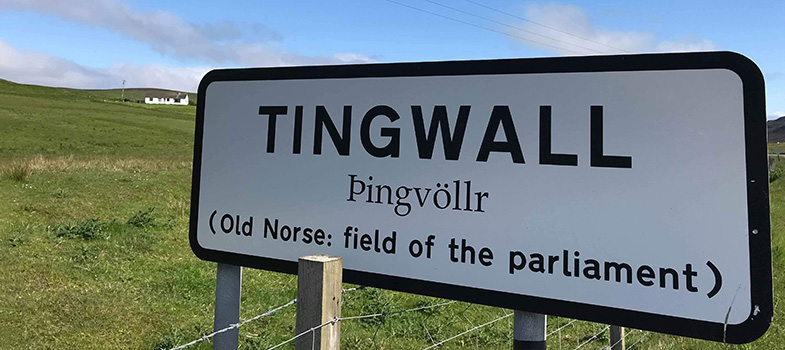9.5 Scots in film
The ways in which Scots appears in films might, on the face of it, be expected to parallel the ways it has developed in television drama. In fact, the very different structures of the television and film industries as businesses mean that the history of Scots in each is quite distinct.
Activity 11 
When reading this section, note points which are of interest to you for reflection at the end of the unit, such as:
The use of Scots language in film has a far patchier record than its use on stage and even on television. Arguably there are a number of reasons for this including the fact that:
Scotland has no established native film production industry
the Scottish population is too small to offer a lucrative market for Scots language films
film producers lay emphasis on international sales in markets where English is a lingua franca.
A further reason may be that often the versions of ‘Scotland’ presented in film are romanticised, sentimentalise its people and history or indulge in ‘tartanry’ or ‘Highlandism’. Hence, for example, the use in Braveheart (1995) of tartan and face paint in a manner entirely historically inaccurate, while, despite several of the cast being Scots, the variable accents of its ‘Scottish’ characters reflect valiant, but often failed, attempts by non-Scots – and a non-Scot wrote the script in English.
In other words, the structures of the film industry militate against easy inclusion of Scots in film dialogue.

(This is a poster advertising the 1949 Whisky Galore film for a Swedish Audience, which features a mix of a cartoon characters in kilts and black-and-white photographs of the actors.)
Older films set in Scotland, like I know where I’m going (1945) do not use Scots at all, but simply seek to employ Scottish accents. The same is true even of films like Alexander Mackendrick’s original Whisky Galore (1949), which, while it employed many fine Scottish actors, never sought to use the Scots language. Both these classics were produced by non-Scottish production companies, the former by Powell and Pressburger and the latter by Ealing Studios.
The more recent development of interest by producers with an understanding of Scottish culture may not have completely altered the position, but television companies, perhaps out of their growing experience of Scots language in television production, began in the 1970s and after to take more ‘risks’ in supporting films in which Scots was to varying extents heard more. Bill Forsyth’s Gregory’s Girl (1980), for example, while making limited use of Scots dialogue, achieved international success.
Arguably, it is from the 1990s onwards that Scots features more actively in film, following the worldwide impact of Trainspotting with its vibrant use of Edinburgh-Scots dialect. As mentioned in the Dialect Diversity unit, the film Trainspotting was subtitled in other countries – even in countries like the U.S.A. where English is spoken as a first language – while the Pixar film Brave featured a distinctly Doric-speaking character who was not subtitled, but it is apparent that the character is supposed to be difficult to understand to suit comic purposes.
Activity 12
In this activity you are working with an extract from Irvine Welsh’s novel Trainspotting, trying to ‘tune’ into Leith, a part of Edinburgh, Scots and then speaking it yourself. Do be alerted to the characteristic of Welsh’s style of writing - the frequent use of strong swear words.
A number of highly-regarded films, though certainly not many, have since then employed Scots language dialogues, including My Name is Joe (1998), Sweet Sixteen (2002), Red Road (2006) and The Angels’ Share (2012). The first two and the last of these films were directed by the radical director Ken Loach and all, like Trainspotting, were in part funded by either the BBC, Film Four or the British Film Institute.
In short, Scots language is more likely to be heard in film when the producers have an interest in Scottish culture, a public film body is involved in providing a key element of financial support and the themes are in one way or another radical.
![]()
What do you think: Since Scots is a distinct language from English, though very close to it, should subtitles be used for Scots dialogue in internationally-marketed films?
9.4 Scots in television drama
